- Share full article


12 Days on the Most Storied Highway of Them All: The Silk Road
It was a trip most of us can only dream about: following the ancient trade route through the centuries-old towns and sweeping landscapes of Central Asia.
A scene along the highway between Kalai-Khumb and Dushanbe, in Tajikistan. Credit... Tony Cenicola/The New York Times
Supported by
By Charly Wilder
- Published March 9, 2020 Updated March 10, 2020
The sky over Tajikistan was a deep deoxygenated blue as we sped through the desolate mountain landscape of the eastern Pamirs. For days we had been driving one of the world’s most treacherous roads, the Pamir Highway, which snakes through the highlands of Tajikistan before turning north toward Kyrgyzstan along the border with China. We had just crossed the highest pass yet: nearly 15,000 feet above sea level with views to the Hindu Kush. Now the road stretched out, empty and endless, over a glaciated, monochrome terrain of ridges, gorges and craters.
“On a clear day, you can see 7,000 mountains from here,” said Omurbek Satarov, our 38-year-old Pamiri driver, gesturing toward the Himalayas. He pointed out places of intrigue: the site of what was once a clandestine Soviet biological laboratory; a mountain laced with gold deposits that the Tajik government recently traded away in a “secret deal” with China; a cliffside Russian Empire checkpoint built in 1912 and held together with a paste of mud and camel fur; a flock of spiral-horned sheep running across a rock face.
The sheep are called Marco Polos, named for the Venetian explorer who passed this way when it was part of the ancient Silk Road, a vast network of trade routes running from China to the Mediterranean, spreading not only silk and other goods, but art, technologies, ideas and belief systems across the globe.
Omurbek pointed out another checkpoint, built, he said, on the site of a mass grave of Basmachis, anti-Bolshevik Muslim guerrilla fighters who rebelled against Soviet rule early in the 20th century.
“They say it’s haunted,” he said from behind wraparound sunglasses. “Border guards see ghosts there — poltergeist.” He knew this because his father, uncles and grandfather had all been Soviet border guards. He himself had been a counternarcotics officer pursuing drug traffickers bringing Afghan opium and heroin up toward Moscow, where it is redistributed — a newer, more pernicious East-West trade network.
“It wasn’t a pleasant job,” said Omurbek, who now works in Tajikistan’s expanding tourism sector.

My husband, Roham, and I were at the two-thirds point of a trip I’d been dreaming about for years: following a section of the Silk Road through the Central Asian countries of Uzbekistan, Tajikistan and Kyrgyzstan, a part of the world that for centuries was a cradle of civilization — the holy grail of empire-builders from Alexander the Great to Genghis Khan — but that, until recently, has been difficult, if not impossible, for Westerners to visit.
For generations, the region’s Buddhist and Zoroastrian temples, ornate mosques and madrassas, ancient bazaars and breathtaking natural landscapes were hidden behind the Iron Curtain, then enveloped by dictatorship, poverty, social turmoil and war.

TURKMENISTAN
National Park
Alai Valley
pamir mountains
afghanistan
Street data from OpenStreetMap
But in recent years the tide has been turning as relative economic and political stability settles over the region. The death in 2016 of Uzbekistan’s brutal, long-ruling dictator Islam Karimov has led to reform and a tentative thaw: the “Uzbek Spring.”
Tajikistan has undergone remarkable reconstruction since the end in 1997 of its devastating six-year civil war, and the rioting and unrest that plagued Kyrgyzstan a decade ago are fading into the rear view. Borders are opening and visa restrictions are lifting: As of 2018, citizens from more than 100 countries, including the United States, can travel visa-free through Uzbekistan for up to five days with proof of an onward flight, and a new e-visa system makes longer stays relatively easy. There are even plans for a “silk visa,” offering access to five Central Asian countries.
Regional transportation has improved, in part because of China’s controversial, trillion-dollar Belt and Road Initiative , also known as the New Silk Road, a colossal infrastructure project stretching from East Asia to Europe that aims to expand China’s political and economic influence and which critics worry could lead to a debt crisis across the region. Only the tightly controlled police state of Turkmenistan remains closed-off.
The journey begins
Bypassing the Uzbek capital of Tashkent, we began the trip in the ancient, holy city of Bukhara. Second only to Baghdad as an intellectual lodestar of the Islamic world, Bukhara was a center of trade, scholarship, religion and culture stretching back millenniums. It was where the great Persian poets Ferdowsi and Rudaki composed their most important works, and where Avicenna, the so-called father of modern medicine, wrote the treatises that would imprint centuries of scientists and philosophers from Cairo to Brussels.
The trip from Berlin had not been easy, but two days of low-cost air travel hell were forgotten the moment we stepped out at dawn into the 17th-century Lyabi-Hauz plaza. Two blue-tiled madrassas flanked a vast stone reservoir, along with a Sufi cloister and a teahouse, all of which stood empty and blanketed in mist, silent but for the screeching of birds in the mulberry trees.
We slept for a few hours at Lyabi House Hotel, one of several bed-and-breakfasts in Bukhara housed in 19th-century Jewish merchants houses, and then headed for the Po-i-Kalon religious complex, the city’s architectural highlight. Located south of the ancient Ark citadel, Po-i-Kalon includes the exquisite 12th-century Kalon Minaret, one of only two buildings in the city spared by Genghis Khan. For centuries, condemned criminals were thrown from the top, leading to the minaret’s nickname: the Tower of Death. Some believe the ornate diamond patterning of its kiln-fired brickwork is the inspiration — via Marco Polo — for the Doge’s Palace on San Marco square in Venice.
In a kind of trance we walked the town’s maze of blue-domed mosques, mosaic-tiled courtyards and former caravanserais (essentially inns where travelers could rest with their animals), all threaded together by ancient arcades only partially defiled by tacky tourist development. Between two domed bazaars, where locals now hock handicrafts of variable quality and authenticity, we visited the Maghok-i-Attar, Central Asia’s oldest mosque and a palimpsest of Bukharan religious history: a 16th-century reconstruction of a ninth-century mosque built atop the remains of a fifth-century Zoroastrian fire temple, which was itself built on top of an earlier Buddhist temple.
Then we decamped to the 350-year-old Bozori Kord Hammam to be steamed, scrubbed, massaged and rubbed with honey and ginger by various members of the Iranian-Uzbek family that now owns it.
By sunset we had a table on the terrace of a restaurant called Minzifa, overlooking the sun-bleached domes and rooftops of Bukhara. There we made our way through a greatest-hits of Central Asian cuisine, which was shaped by diverse culinary cultures, from East Asia to the Mongolian steppe to the Persian Gulf.
A salad of Chinese cabbage, cucumber, onion and beef in a soy-sesame chile dressing was followed by plov, or rice pilaf, the Persian-influenced Central Asian staple that probably originated in the culinary methods of the Islamic golden age, pollinating national rice dishes from Spanish paella to Indian biryani. Rice is browned with meat — usually lamb or mutton — then stewed in a caldron called a kazan with onions, garlic and carrots, and spiced with cumin, coriander, barberries or raisins, marigold and pepper. Minzifa’s version was delicate and flavorful, an ideal lead-in to well-charred shish kabob of lamb and beef, washed down with the ubiquitous Central Asian green tea.
Foodwise, the trip would go downhill from there. While it’s possible to find good and even great versions of plov, the East Asian-style dumpling called manty, and other dishes, I had to agree with the adage that you don’t visit Central Asia for the food.
The treasures of Samarkand
We set out early the next day on the sleek high-speed train line that has drastically reduced travel times in the country, running, as of 2018, all the way from Tashkent to the Silk Road city of Khiva in the west. Cotton fields flashed by in the blue of morning until we finally reached Samarkand, a city as old as Rome or Babylon, whose architectural riches surpass even Bukhara’s — many built by Timur (also known as Tamerlane), the Turco-Mongol conqueror of the late Middle Ages who made it his capital.
At the Ulugbek Observatory, one of the first and finest in human history, we gazed down into a trench at the remaining quadrant of the great meridian arc that allowed early astronomers to measure time and celestial objects with breathtaking accuracy.
From the Registan, Samarkand’s ancient central square with its triptych of madrasahs, we walked to the forgotten-feeling Old Jewish Quarter, then headed to the Shah-i-Zinda necropolis, a vast labyrinth of blue-tiled, honeycomb-vaulted mausoleums where pilgrims and tourists wander in awed silence among the mosaic and majolica.
The sites were extraordinary, but even more than Bukhara, Samarkand suffers from overdevelopment of its tourist attractions. Shah-i-Zinda was aggressively restored in 2005, and pushy souvenir-sellers now clog the beautiful, holy madrassahs of the Registan.
It’s an issue that’s been pushed to the forefront in Uzbekistan, particularly after the bulldozing of a 1.2-mile-long tract of medieval residential buildings in the southeastern city of Shakhrisyabz nearly led to the revocation of its UNESCO status. It remains to be seen whether the right lessons were learned.
The next morning, we took a taxi out of Samarkand and deeper into the lush Zerafshan Valley, passing cotton and wheat farms and fields of blood-red poppies, until we reached the Tajik border. There we walked a fenced-in border zone hovered over by sun-faded billboards of the Tajik president, Emomali Rahmon, and Karimov’s successor, the Uzbek president, Shavkat Mirziyoyev, triumphantly clasping hands. It’s one of several Uzbek-Tajik crossings to reopen in the last few years — part of an easing of tensions between the two countries that followed the death of Karimov.
In Tajikistan, frescoes, hot springs and ruins
On the Tajik side, we caught a ride with one of the burly drivers jockeying for our business and headed for Penjikent, an ancient town just beyond the border. After stopping to look at Neolithic ruins on the outskirts, we headed to the Rudaki Museum, which is devoted to the great Persian poet but is best known for its phenomenal eighth-century Sogdian frescoes that depict court life and scenes from epic Persian literature.
We marveled at the frescoes, evidence of the great wealth and sophistication of the Sogdians, the main caravan merchants of Central Asia from the fifth to the eighth centuries, who played a major role in bringing Buddhism to China and silk to Europe. I was so deep in historical reverie that I hardly noticed I had walked into a room filled with rotting taxidermied animals, warped into grotesque expressions of agony and terror. But by this point, we were used to such surprises.
The truth is that in order to enjoy this kind of trip through Central Asia, you’re going to have to be on reasonably amicable terms with the weird and unexpected, with greasy meat dishes, bleak squat toilets and frequent incidents of abject, often hilarious, transactional chaos.
Over the course of our 12-day trip, we were drawn into several road crises, spent countless hours searching for functional A.T.M.s in the company of a ragtag group of “helpful” locals, and were once cornered in a border zone by a hulk of a man in military fatigues with a mouthful of gold teeth, insisting we get in his car because the other drivers are “not normal.” We woke up one morning to a taxi driver banging on our hotel room door insisting on bringing us to another town, and once, in a banquet-style restaurant, were served a glistening chalice of mayonnaise.
And yet we also rode horses at dawn through mountain pastures of frosted wildflowers, watched Afghan camel caravans cross the Wakhan Corridor in a snowstorm, and bathed in hot sulfur springs in the mountain air, laughing with locals. It was difficult and chaotic and grueling, and it was without a doubt one of the most memorable trips of my life.
From Penjikent we continued to Dushanbe, the Tajik capital, to explore its wide Soviet boulevards and monuments, which have undergone dramatic beautification since a new mayor came to power, Rustam Emomali, son of President Emomali Rahmon. The elder Emomali has led the country for 26 years, stabilizing it, but with increasing authoritarianism. His son is widely expected to be the next president.
Yet there are other forces at play — from East and West. Tajik teens in Nikes and Adidas cluttered the streets of Dushanbe, and on our way to have beers on the grand terrace of the Soviet-era, Persian-style teahouse Chaykhona Rokhat, we passed a crowd gathered around a makeshift stage, holding up smartphones under a banner that read, “Huawei Tajikistan Selfie Show.”
In the morning we met a driver from a company called Roof of the World — the nickname for the area known as High Asia, including the Pamirs, the Himalayas and Tibet — and an adventurous 29-year-old Russian coal executive whom I’d found on a message board looking to share the $1,200 cost of a driver from Dushanbe to Osh. It’s usually a six-day drive; we decided to do it in four, which meant making it on day one to the mountain town of Khorog, a 16-hour journey.
It should have been grueling, but it was mostly wonderful. Dushanbe’s outskirts gave way to undulating blue-green vistas and the fantastical aquatic terrain of the Norak water reservoir, a major hydroelectric energy source. Cloud shadows passed over cliffside hamlets glimmering in the evening light as chimneys spat smoke.
Eventually we reached the Panj River, separating Tajikistan and Afghanistan, which we would follow for the next two days, seeing as much of Afghanistan’s untroubled rural north on the other side of the river as we did Tajikistan.
We stopped at hot springs and hiked to the ruins of Zoroastrian and Buddhist temples and fortresses that once formed a network along the Silk Road. At night we would stop to eat and sleep along the chain of homestays that links the region today. Every mountain village has a few, where hospitable Pamiris offer visitors a hot meal and a bed or a spot on the floor.
Into the mountains
As we climbed higher and higher into the eastern Pamirs, its wild remoteness closed in around us. Great gorges and rock faces stretched across the horizon, interspersed by streaks of green — agricultural plots worked by farmers using traditional methods that languished during Soviet times, when goods were largely imported.
When the Soviet Union collapsed, nowhere was hit harder than the Pamirs, the poorest and most isolated region of the poorest country in the former Eastern Bloc. The Pamiri took the losing rebel side in the war, leaving them doubly decimated. Yet in the last decade, they have seen remarkable recovery, in part because of foreign assistance, much of it from the foundation of the Swiss-born Aga Khan, a spiritual leader of the Pamiri population.
But tourism is also making a huge difference, explained Ruzadorova Bakhten, a beautiful 48-year-old homestay proprietor and wife of a yak herder, as she served us a heaping platter of fried fish in the remote village of Bulunkul. “Every year there are more and more visitors. This makes us very happy, not only because they spend money,” she said, “but because sometimes they come and help in other ways.”
Last year, she said, an American who first came as a tourist returned to install a new weatherproof roof on the school, of which Ruzadorova is also the director. After lunch, she walked us through the school, heated with rudimentary ovens and plastered with peeling posters in Russian, Pamiri, Tajik and English, then through the rest of the village, which sits on a vast, wind-ravaged plateau ringed by soaring snowcapped mountains.
“It’s beautiful here,” my husband said in Farsi to some local men making repairs to solar panels donated by a German N.G.O. “Oh yes, so beautiful!” retorted one of the men with a sarcasm so sharp it broke the language barrier as children rode rusted bicycles in figure-eights around dwellings built from clay and yak dung.
That afternoon, we moved higher into the eastern Pamirs, stopping to marvel at the shimmering freshwater lakes of Yashil Kul and Bulunkul. In the high-Pamir town of Murgab, at 12,000 feet above sea level, we met Omurbek, who had the right papers to bring us into Kyrgyzstan.
The drive was climatically jarring to say the least. Within little more than an hour, the blazing-white, snow-blanketed peaks of the Taldik pass gave way to the rolling green of Kyrgyzstan’s Alay Valley. Cows and horses grazed in the hills and occasionally wandered into the road.
The green turned greener still as we descended into the Fergana Valley, the lush ancient corridor between Greek, Chinese, Bactrian and Parthian civilizations, finally arriving in the Silk Road city of Osh. We were too early in the season to visit the extraordinary high mountain pastures, or jailoos, of Son-Kol, Kochkor or Karakol, so after a night we headed an hour out of town to the Kyrgyz-Ata National Park. There, we stayed in a yurt set high on a hill near the home of a shepherd and his family.
We spent our last days in Central Asia riding horses through dense juniper forests and up mountains, learning the Kyrgyz riding style, often left unattended to ride in the wilderness. Brambles scratched my legs, and I was so sore from riding it became difficult to walk. There was nothing to eat but plov and day-old manty, and a late spring snowfall battered the yurt, dripping down into the sides, leaving much of our bedding sodden. We woke up shivering under blankets, gazing up through the center of the yurt to the pale spring sky. It was tortuous. We hoped it would never end.
Charly Wilder is a Berlin-based writer and frequent contributor to the Travel section.
52 PLACES AND MUCH, MUCH MORE Discover the best places to go in 2020, and find more Travel coverage by following us on Twitter and Facebook . And sign up for our Travel Dispatch newsletter : Each week you’ll receive tips on traveling smarter, stories on hot destinations and access to photos from all over the world.
Advertisement
App Privacy
The developer, BOOSTER GROWTH SOLUTION, CHP , indicated that the app’s privacy practices may include handling of data as described below. For more information, see the developer’s privacy policy .
Data Not Collected
The developer does not collect any data from this app.
Privacy practices may vary, for example, based on the features you use or your age. Learn More
Information
- App Support
- Privacy Policy
More By This Developer
You might also like.
lokoplane.kz
Taxi Plus UZ
More than just Mondays
Tajikistan’s capital city, Dushanbe, is undergoing a radical transformation. Here are my tips for exploring it.
Written by Michael Turtle
Michael Turtle is the founder of Time Travel Turtle. A journalist for more than 20 years, he's been travelling the world since 2011.
Michael Turtle is the founder of Time Travel Turtle and has been travelling full time for a decade.
Updated: August 5, 2023
The best things to do in Dushanbe, Tajikistan
Dushanbe is a city of reinvention. Normally large urban areas evolve organically, changing slowly with broad trends and a shifting population. But the history of Dushanbe is punctuated with dramatic changes that have fundamentally altered the character of Tajikistan’s largest city.
Looking at it today – a sprawling centre with a population of just under a million people, palatial public zones, and bustling entertainment districts – it’s hard to believe what it looked like less than a century ago.
Dushanbe started as a small village and its name gives a hint to its original purpose. The Tajik word ‘Dushanbe’ actually means ‘Monday’ in English, and the village got its name because a weekly market was held here every Monday.
People would come down from the mountains with their goods and trade with each other. The rest of the week, not much happened in Dushanbe. Only a few thousand people actually lived here.
That was how it was for centuries – until 1924, when it was named as the capital of the Tajik Autonomous Soviet Socialist Republic, part of the USSR.
The Soviets turned the region into a centre for cotton and silk production and tens of thousands of people flooded in. Dushanbe was renamed to ‘Stalinabad’ in 1929, in honour of Joseph Stalin. Within just a few years, the city had been unrecognisably changed.
When I visit, you can still see some of the Soviet influence in the architecture and the urban layout of Dushanbe – particularly in some of the residential apartment blocks.
But, what’s also obvious is that there is not nearly as much Soviet architecture in Dushanbe as you find in the other capitals of Central Asia.
This is not accidental. The authorities in Tajikistan have made a concerted effort since independence to demolish as many buildings from the Soviet era as possible, and replace them with modern structures that project the image of a new sovereign country.
It’s another of the big moments that is quickly changing the face of Dushanbe. There are the old districts that are yet to be touched, parts of the city look like a construction zone, while other areas that have already been rejuvenated look much fresher than you expect in these often dusty countries.
There’s a great example of Dushanbe’s transformation in the city’s two best museums, with their appearances completely different from the other.
National Museum of Antiquities of Tajikistan
First, the National Museum of Antiquities of Tajikistan in Dushanbe. The name refers to the exhibits inside but you could be forgiven for thinking that it’s the building itself that is one of the antiquities. It feels tired, with tatty carpet and old air-conditioning units sitting in the hallways
But the museum has an excellent collection of artefacts that have been collected in the country and represent the most important eras over millennia of history.
There are items from Sarazm, for instance, which is considered to be the oldest city in Central Asia. Of particular note in this section is the ‘Lady of Sarazm’, the skeleton of a woman who was buried in the 4 th century BC and covered with colourful lapis beads and seashell bracelets.
And the highlight is the 13-metre-long reclining Buddha that was found in Ajina Teppe and is about 1500 years old. It’s the largest Buddha found in Central Asia and is an incredible sight, even if it is presented rather unceremoniously in an upstairs room of the museum.
Beyond these artefacts, there are hundreds of other fascinating items and anyone with an interest in the region’s history will be impressed – although it may be best to bring a guide to get the most out of it.
National Museum of Tajikistan
Meanwhile, at the National Museum of Tajikistan, you’ll also find the reclining Buddha on display – except this one is a replica. However, it is presented with much more fanfare, with its own special room and dramatic lighting.
Everything at the museum is glossier. It’s an enormous building that opened in 2011, with a cavernous foyer and 22 large exhibition rooms spread out over four floors.
The collections in the museum range from the geology of the region, to the animals of Tajikistan, through different historical periods and right up to modern times. There are also art galleries and spaces for temporary exhibitions.
You could spend hours here exploring it all – and maybe you would want to. Especially if you have a guide, you’ll find there’s more information than you could possibly retain.
But beyond the collections and the exhibits, it’s the scale and boldness of the building that tells you so much about Dushanbe today.
Rudaki Park
This boldness continues outside the building and into Rudaki Park, which flows out south of the National Museum of Tajikistan as an enormous landscaping of lawns, lakes, and interconnected pathways.
This is the ceremonial centre of Dushanbe and it has some of the city’s (and country’s) most important landmarks.
The most obvious one is the huge flagpole that rises up from the side of the lake. It is 165 metres high and was the tallest flagpole in the world when it was built in 2010, but was overtaken about four years later by a new flagpole in Jeddah, Saudi Arabia.
There are some very important statues here, including the 9 th -century writer Rudaki (for whom the park is named) and the 9 th -century leader, Ismail Somoni, who the national currency is named after.
The park is a very pleasant space and it’s easy to spend some time wandering around seeing the different sights. It’s popular with locals so you’ll see a nice slice of local life here too.
Mehrgon Market
Travelling through the lands of the Silk Road, one of the things I always enjoy experiencing are the local bazaars, which always conjure up a romantic connection to the region’s heritage, in my mind.
In Dushanbe, though, even the bazaars have not completely survived the push for regeneration, and some of the most famous ones in the city have closed or been demolished in recent years.
To replace them, the modern Mehrgon Market was built, and it’s certainly a beautiful building. While it is was only opened in 2014, it has taken some of its design influence from traditional Tajik architecture.
Like all Central Asian bazaars, there are stalls with colourful fruits and nuts, sweets and breads, all the food that is so generously offered at dining tables across the country. It’s very photogenic and I enjoy my time exploring it, but I do wonder how warmly it’s been embraced by local residents.
Hissar Fort
About 30 kilometres away from Dushanbe is another of the most popular sights for visitors (and locals), Hissar Fort.
It was built in the 18 th century with thick walls and and an impressive gateway with cylindrical towers on each side. Most of it was destroyed by the Russians in 1924 and has since been reconstructed. The gateway is original, though.
On the same site, there’s a madrasa from the 17 th century that has been turned into a museum. The rooms around the courtyard have small exhibitions about life in the islamic school and in the region around it.
Even though a lot of the structures in and around Hissar Fort are recreations, there’s a nice atmosphere here and it’s very photogenic, with lovely viewpoints from up on the wall and from the rear gate. I visited at sunset and the light was lovely.
Food and drink
Before I finish up, I want to offer a few suggestions for places to eat and drink in Dushanbe. It’s a lively city and you shouldn’t have too much trouble finding anything, but there are a few particular places to take note of.
The first is the Rokhat Teahouse, an institution in Dushanbe that’s been operating on the main street since 1958. The breeze flows through the teahouse, which doesn’t have walls on two sides, and the ceiling and columns are beautifully decorated. The meals are generous and affordable, with a great selection of local delicacies.
One of the most famous Tajik dishes is Qurutob, which is made from pieces of flatbread soaked in a sour milky liquid, topped with vegetables (sometimes with optional meat too). You’ll be able to find it in a few places, but the local recommendation for the best in town is Olim Qurutob restaurant. ( See it on a map here .)
It’s a little way out of the centre, so you’ll need to organise transportation, but you’ll be eating it with your hands with the locals for a very authentic Tajik experience.
And, after all of this, I think you’ll deserve a beer. Luckily there’s a local brewery that serves fresh draught beer and food.
The beer is called Sim Sim and, if you travel around Tajikistan, you’ll come across it in huge plastic bottles of a litre or more. So, it’s a bit of a treat to visit the brewery where it all comes from (a bit like visiting the Heineken brewery in Amsterdam).
A pint of the draught beer costs 7 som (about US$0.70) so it’s easy to make a fun night of it all, if you want.
Dushanbe is full of surprises. It’s not what you would expect from the capital of Tajikistan but, then again, it is changing so rapidly, it’s impossible to know what to expect.
All I know is that the few thousand people who were living here less than a century ago would be stunned with what it has become today. It’s about a lot more than just Mondays.
More stories about Tajikistan
- The best things to do in Dushanbe
- Visiting Hisor Fortress from Dushanbe
- Hiking the Fann Mountains
- The beautiful Seven Lakes
- The ancient World Heritage Site of Sarazm
- Things to see in Panjakent
2 thoughts on “More than just Mondays”
beautiful. but visa fee high for bangladeshi visitor
Thanks a lot. all taken photos are so great. It really worth to visit Tajikistan to see its hospitable people and to eat tasty food.
Leave a comment Cancel reply
Find me on the socials:, subscribe for news and deals:.
top stories:

- Car Rentals
- Airport Transfers
- Attractions & Tours
- Bundle & Save
- Destinations
- Trip.com Rewards
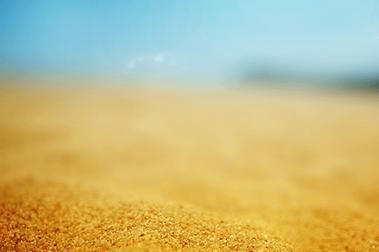
Rokhat Travel Guide
Experience rokhat.


Tsentral'nyy Park

Ramlala Temple

Aram Khachaturian Stadium
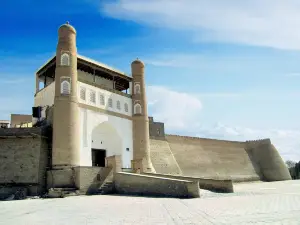
Ark of Bukhara

Kalon Minaret
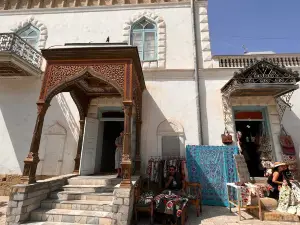
Palace of Moon-like Stars (Sitorai-Mokhi-Khosa)
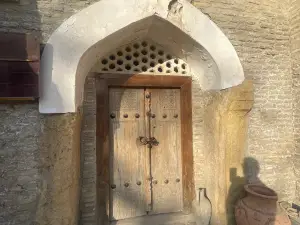
Other Recommended Cities
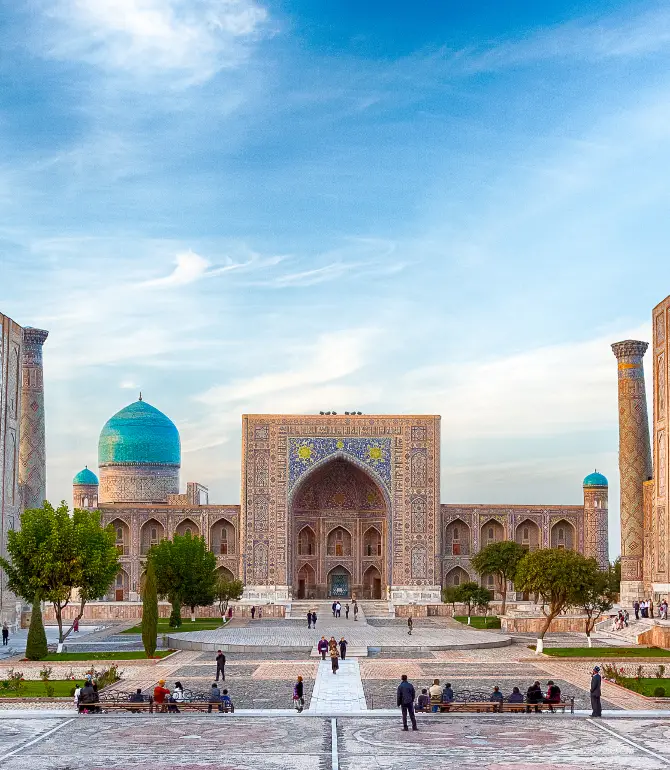
Popular Types of Attractions in Rokhat
Popular destinations, recommended attractions at popular destinations, more things to do in rokhat.
- Customer Support
- Service Guarantee
- More Service Info
- Website Feedback
- About Trip.com
- Terms & Conditions
- Privacy Statement
- About Trip.com Group
Other Services
- Investor Relations
- Affiliate Program
- List My Property
- Become a Supplier
CHOOSE DESTINATION
- Australasia
- North America
- South America
CHOOSE OBJECT
Receive our newsletter.
Add your e-mail address to receive our monthly news.
WE RECOMMEND:
Jewellery by Artists: From Picasso to Koons, an exhibition organised by the culture and art portal Arterritory.com
Chaykhona Rokhat
Author: Anothertravelguide.com 0 COMMENTS
Chainaja or as the locals call it kafushka is an essential part of Central Asian lifestyle. It may be called a cross between a restaurant and a café, and its name has been derived from small tea shops, once scattered along the Silk Route. Chaykhona Rokhat is the oldest and the most famous among its Dushanbe counterparts. Much the same as most of Dushanbe buildings, Rohat traces its roots back into Soviet-era, yet it doesn't reduce its significance. It is worth going there both for its décor (walls and ceilings painted with traditional Tajik ornaments), food, or just a cup of green afternoon tea. Chaykhona Rokhat is almost a must-visit for all the city guests, therefore do not be surprised to bump into some newly acquired acquaintance, or somebody you had met on the plane - even though it is a capital, Dushanbe is a pretty compact city. Locals and tourists, all mingle together there reminding colorful patterns of Tajik fabrics.
Your comments
Unfortunately there are no comments yet..
Time of visit:
Your comment:
© anothertravelguide.com 2015 Anothertravelguide.com is an internet resource for independent travellers. All addresses listed on anothertravelguide.com - hotels, restaurants, shops, etc. have been tested and evaluated by our authors. All opinions are subjective and anothertravelguide.com takes no responsibility if any of these locations don't live up to your personal expectations, taste or mood, or has undergone serious changes since visited by authors and experts of anothertravelguide.com.
- Learn our Food
.jpg/:/cr=t:4.56%25,l:0%25,w:100%25,h:74.99%25/rs=w:1240,h:1240,cg:true)
Welcome to Rokhat Grill, your culinary passport to the vibrant and diverse flavors of Central Asia, right here in Plano, Texas.
Our journey traces its roots back to the rich cultural tapestry of Uzbekistan, where our family has spent generations honing the craft of Central Asian cuisine. Our culinary lineage is steeped in the tradition of the Silk Road, from the bustling bazaars of Samarkand to the ancient city of Bukhara. Our food is a reflection of this rich heritage, offering a taste of a region that is as diverse as it is delicious.
At Rokhat Grill, we pride ourselves in serving unaltered, fully authentic, handmade dishes that capture the true essence of Central Asian cuisine. Our culinary offerings span the breadth of the region, from the hearty plov and sizzling shashlik kebabs to Tajikistan's national dish, Kurutob. Our handmade manti, an exquisite dumpling treat, is a testament to our commitment to authenticity and quality.
Our American journey began in the heart of New York City in 2010, where we opened our first restaurant. Our cuisine, a hidden delicacy of Central Asia, quickly found a loving audience, and our family of chefs grew to serve the demand. Over the past 13 years, we've expanded our footprint across the United States, opening five more locations, each carrying the brand "Rokhat" - a word that means "pleasure" in our native tongue, symbolizing our hope and commitment to provide just that.
Today, we're thrilled to welcome you to our Plano location. Just as in our other restaurants, our aim here is to introduce you to the flavors and traditions of Central Asia, to share with you a piece of our heritage and passion, and to provide an extraordinary culinary experience that you will remember.
We invite you to join us at Rokhat Grill, to explore the gastronomic wonders of the Silk Road, and to experience the warmth and hospitality that is at the heart of our family and our cuisine. Welcome to a delicious journey into Central Asia. We're glad you're here.
Copyright © 2023 Rokhat Grill - All Rights Reserved.
Powered by GoDaddy
This website uses cookies.
We use cookies to analyze website traffic and optimize your website experience. By accepting our use of cookies, your data will be aggregated with all other user data.
- Bahasa Indonesia
- Slovenščina
- Science & Tech
- Russian Kitchen
Get in [ edit ]

Get around [ edit ]
See [ edit ].

Angara village , an open-air museum in some distance from Bratsk featuring Russian houses, the church and utensils of XVII—XX centuries as well as Evenk chums .
Go next [ edit ]
- Has custom banner
- Sleep listing with no coordinates
- Has map markers
- Outline cities
- Outline articles
- City articles
- Has Geo parameter
- Irkutsk Oblast
- All destination articles
- Has routebox
Navigation menu
Explore Bratsk
Plan your trip to bratsk: best of bratsk tourism.
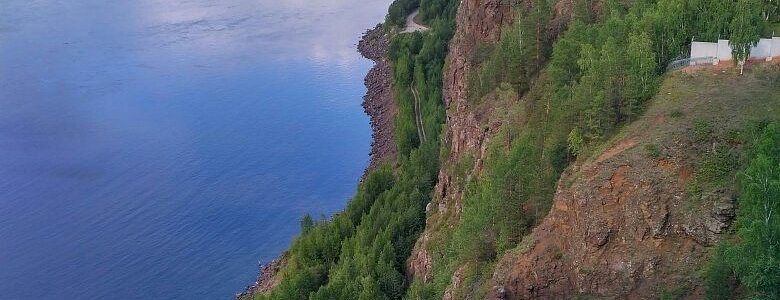
Essential Bratsk

Bratsk Is Great For
Eat & drink.

- Taiga Hotel
- Bratsk Hotel
- Guest House Vremena Goda
- Rock Garret
- Bratsk Hydroelectric Power Station
- Angarsk Village Architectural and Ethnographic Museum im. O. Leonova
- Church of the Nativity
- Bratsk Museum of The History of The Development of The Angara River
- Park of Culture and Leisure of Bratsk Municipality

IMAGES
VIDEO
COMMENTS
Предварительное бронирование по телефону 8 (800) 700-91-60. Smartavia готова бесплатно перевезти пострадавших и их близких в Москву и из Москвы. Оформить билет можно по номеру +7 495 970 00 55 или через ...
4,671 Followers, 3 Following, 707 Posts - See Instagram photos and videos from Rokhat_Travel (@rokhat_travel) Something went wrong. There's an issue and the page could not be loaded. Reload page ...
Rokhat Travel, Saint Petersburg, Russia. 58 likes · 1 talking about this · 24 were here. Дешевые авиа ️ и ж.д билеты. +7812 6789690 What's app, Telegram, Viber, IMO ⬇️⬇️⬇️⬇️⬇️⬇️⬇️⬇️⬇️⬇️ +79516899690
Two blue-tiled madrassas flanked a vast stone reservoir, along with a Sufi cloister and a teahouse, all of which stood empty and blanketed in mist, silent but for the screeching of birds in the ...
Read reviews, compare customer ratings, see screenshots, and learn more about Rokhat Travel. Download Rokhat Travel and enjoy it on your iPhone, iPad, and iPod touch.
The first is the Rokhat Teahouse, an institution in Dushanbe that's been operating on the main street since 1958. The breeze flows through the teahouse, which doesn't have walls on two sides, and the ceiling and columns are beautifully decorated. ... The beer is called Sim Sim and, if you travel around Tajikistan, you'll come across it in ...
Rokhat Travel 3 678 subscribers Дешевые авиа ️ и ж.д 🚄билеты. 📞 +78126789690 IMO +79533409690 📥What's app, Telegram, Viber ⬇️⬇️⬇️⬇️⬇️⬇️⬇️⬇️⬇️⬇️ 📲+79516899690 www.rokhat.ru
23 likes, 2 comments - rokhat_travel on March 31, 2024: "Щас, секунду! Щас! ".
Immerse Yourself in the World of Asian Culinary Art - Rokhat Grill Gallery. What our clients have to say. About Us. Our cuisine and chefs. We carry unaltered, fully authentic, handmade dishes that resemble a one-of-a-kind cuisine you need to catch a flight for. Being a family full of chefs, we offer these cuisines in major cities across the US ...
9 likes, 2 comments - rokhat_travel on February 29, 2024: " ️ ️ Diqqat, diqqat! Bizga mobilograf kerak. Jamoamizda sizni kutib qolamiz +7 951 689..."
Rokhat Grill - Visit Plano is the official destination marketing organization for the City of Plano, Texas. Visit Plano represents tourism-related entities in such categories as lodging, dining, restaurants, arts & attractions, shopping, and transportation, as well as other companies indirectly involved in the visitor industry.
Explore Rokhat with Trip.com's comprehensive travel guide. Discover the city's top attractions, best local dishes, essential travel tips, and hidden gems. ... Discover the city's top attractions, best local dishes, essential travel tips, and hidden gems. Get insights from real travelers' reviews and make the most of your visit. https://www.trip ...
Discover the most authentic Central Asian Cuisine in Texas and fall in love.
Chaykhona Rokhat is almost a must-visit for all the city guests, therefore do not be surprised to bump into some newly acquired acquaintance, or somebody you had met on the plane - even though it is a capital, Dushanbe is a pretty compact city. Locals and tourists, all mingle together there reminding colorful patterns of Tajik fabrics. 84 Rudaki
12 likes, 0 comments - rokhat_travel on April 17, 2024: " Дешевые билеты в Питер | на апрель Ургенч - Питер вт, ср, пт, вс от 28 000₽ ...
At Rokhat Grill, we pride ourselves in serving unaltered, fully authentic, handmade dishes that capture the true essence of Central Asian cuisine. Our culinary offerings span the breadth of the region, from the hearty plov and sizzling shashlik kebabs to Tajikistan's national dish, Kurutob. Our handmade manti, an exquisite dumpling treat, is a ...
Bratsk is a city in the Irkutsk region which is on the Angara River near the vast Bratsk Reservoir. The population is not so big in comparison to other Russian towns at the 260,000 mark. The ...
©2023 Overseas Adventure Travel • 347 Congress St. • Boston, MA 02210 We use cookies to improve your experience, by using our site you accept such use. To view our cookie and privacy policy please click ...
Bratsk (Russian: Братск brahtsk) is a large city in Irkutsk Oblast on the Baikal-Amur Mainline.
43 likes, 3 comments - rokhat_travelJuly 21, 2020 on : "Расписание чартерных рейсов с 22 июля по 2 августа по возвращению соотечест ...
Eat. Drink. Sleep. Go next. Bratsk ( Russian: Братск brahtsk) is a large city in Irkutsk Oblast on the Baikal-Amur Mainline . Angara River at Bratsk.
7 likes, 0 comments - rokhat_travel on March 6, 2024: " Дешевые авиабилеты в Ташкент Санкт-Петербург - ...
Bratsk Tourism Bratsk Hotels Bratsk Bed and Breakfast Flights to Bratsk Bratsk Restaurants Things to Do in Bratsk Bratsk Travel Forum Bratsk Photos Bratsk Map. Hotels. All Bratsk Hotels Bratsk Hotel Deals By Hotel Type. Bratsk Motels Bratsk Hostels Bratsk Business Hotels Bratsk Family Hotels. Popular Amenities.